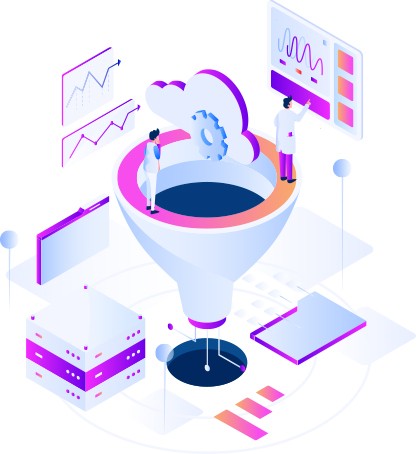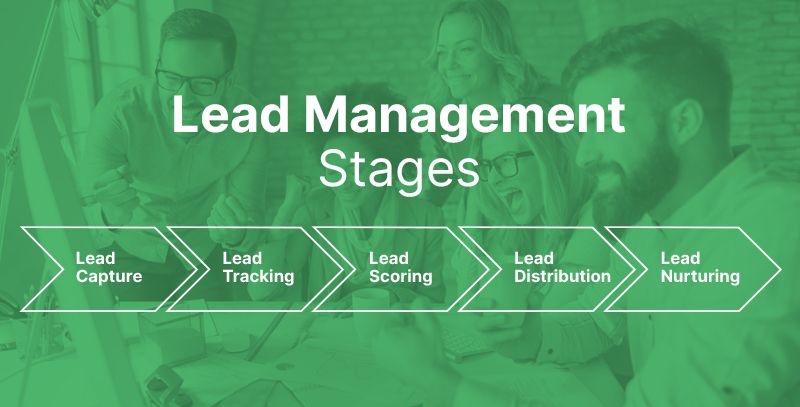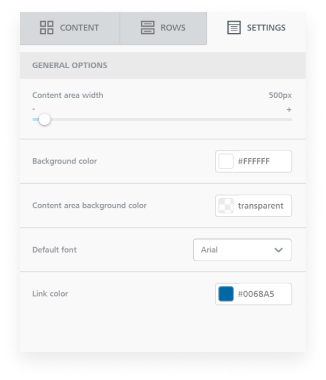
Prompt replies can be the difference between winning and losing customers. Does the following scenario sound familiar?
You are spending the day ironing out final design details ⚙️ for a client’s new home and checking on another build that is in progress ?. You do not have the chance to check your email until almost 6 p.m. ? When you do, you find that someone reached out with a question ? about booking a design consultation ☎️. When you respond, you discover that they have booked ? a consultation with your competitor because they did not hear back from you quickly enough.?
You don’t have to lose business this way. You may not be able to respond right away, but GoCRM can, with text messages and emails customized to any situation and ready for any lead who reaches out to you via phone, email, or form submission.
Auto Reply Benefits

Main benefits of auto reply messages.
Responding personally to every communication may seem like the best way to earn business, but the reality is that auto replies offer you and your leads many advantages. In addition to allowing you to reply promptly, auto replies allow you to do the following:
✔️ Provide Reassurance
People who reach out to your business expect to hear back from you quickly. Often, they expect to receive a message from you within the same business day.
If you take too long to respond, they are likely to assume that you are not interested in their needs. They may move on to your competitor. You will have lost their trust, and their business.
Auto reply messages prevent these misunderstandings by offering prompt replies that tell people when you will be able to respond to them.
When they receive prompt and useful auto replies, people feel noticed, cared for, and important. That helps them to maintain a positive view of your business.
✔️ Provide Further Direction
You can also use auto reply to offer additional resources and communicate critical information to people both inside and outside your organization.
Providing further direction in this way keeps people engaged with your business until you can reply to them personally.
Here are some examples of the useful information you can include in an auto reply text or email:
- Telling customers when a technician is on their way
- Requesting a review after a completed job
- Providing contact information for someone who is available to talk to them immediately
- Directing customers and leads to online information they may find useful
- Promoting upcoming events
✔️ Take a Break
No matter how committed you are to your business and your clients, you cannot always be available to respond to messages. You need time off, and you need time to devote to other aspects of your job.
Auto replies make this time away possible. You can attend to matters outside the office, take a vacation, or even spend the evening at home while also providing colleagues, customers, and leads with the information they need until you return.
Auto Reply Principles

The best auto replies include certain elements that allow them to communicate clearly, professionally, and usefully. Here are the most important principles to follow when composing an auto reply.
Plan
Create your auto replies ahead of time so you have time to craft them the way you want them before you need to send them out.
Proofread
Make sure your auto reply is free from spelling and grammatical errors, adopts a friendly and professional tone, and is easy to understand.
Include Clear Dates
When communicating dates, use specific information that cannot be misunderstood. eg. ‘Oct-8′ instead of ’10-08’.
Give a Timeline
Use your auto reply to tell your lead, customer, or colleague when they can expect to hear from you.
Include Other Contacts
Include contact information for the people your colleague, lead, or customer can contact while you are unavailable.
Include Relevant Links
Add any links that will be useful to the people who reach out to you.
Include Emergency Contact Information
You may also want to include a way for people to reach you in case of emergency.
Auto Reply Scenarios + Examples
To get you started, here are 15 scenarios, with examples, where auto replies can help. You can use these examples as they are, customize them to your business and industry, or use them as inspiration for your own auto reply messages.
Generic Auto Reply
The generic auto reply is a message you send out to reassure a contact that you have received their message and will be in touch shortly. You can include your hours of operation, include a link for more information, or provide a timeframe for your reply.
Thank you for reaching out to {Business Name}. We have received your message and will be in touch {Time Frame}.
Copy To Clipboard
Thank you for contacting us! We will be in touch shortly, but you may also find answers to some of your questions on our FAQ page at {link}.
Copy To Clipboard
We look forward to serving you! We will get back to you as soon as we can within our business hours {Hours}, but no later than 24 hours from now.
Copy To Clipboard
Thank you for contacting us here at {Business Name}. We will be in touch soon. We look forward to serving you.
Copy To Clipboard
Hi there! We just wanted to let you know we received your message and will be in touch before our offices close at {Closing Time}.
Copy To Clipboard
We were happy to receive your email. Assisting you is our priority, and that is why a member of our support team will be in touch before the end of business today.
Copy To Clipboard
Thank you for inquiring about {Listing or Product}. We will be in touch in less than an hour to answer any questions you have. Please feel free to check out similar {Listings or Products} here {Link}.
Copy To Clipboard
We are sorry to see that your experience with us has been less than satisfactory. We would like the opportunity to make things right. Our team will look into your complaint and get in touch with you in the next 24 hours. In the meantime, please enjoy this 10 percent off coupon.
Copy To Clipboard
Learn how to setup an automatic introductory text message with GoCRM.
Thanks for Visiting
This auto reply example is an opportunity to thank a website visitor for stopping by your site. You can also use this message to entice them to come back and learn more or purchase from your business.
Thank you for reaching out to us through the website. We cannot wait to show you everything we have to offer. A member of our team will follow up soon, but please take the opportunity to learn more about us here: {Link}.
Copy To Clipboard
Thank you for visiting our site. We are sad to see you go. On your next visit, please enjoy this 20% off coupon for anything in our inventory.
Copy To Clipboard
Missed Call
If you cannot answer a call when it comes in, you can still reply automatically with GoCRM. Use a separate reply for people already in your list of contacts and for new callers.
Existing Contact Example
Hi [Customer’s Name]! It’s {Your Name}. I am sorry I missed your phone call. I will get back to you as soon as possible. You can also schedule an appointment online here {Link} if that is easier for you. I look forward to speaking with you!
Copy To Clipboard
New Caller Example
Hello, it’s {Your Name} from {Your Business}. I am sorry I missed your call, but I will get back to you by the end of the business day. You can also schedule an appointment here {Link} or look around our website for more information here {Link}. Thank you!
Copy To Clipboard
Welcome New Customers
When one of your leads converts into a paying customer, it is time to show them your appreciation and make their transition as easy as possible.
When you cannot communicate with new customers immediately, you can use auto replies instead. Here are some examples of automated welcome messages that will make new customers feel right at home.
Thank you for your recent purchase! Remember that we are here to answer any questions you have as you use your new product. Just contact us here {Contact Information}.
Copy To Clipboard
Welcome to {company}! As one of us, you get to enjoy some pretty sweet benefits. Check them out here {Link}, and don’t forget to brag a little bit on social media. Use our hashtag {Hashtag}.
Copy To Clipboard
Thank you for your interest in working with {Business}. {Contact Name} will be in touch by the end of business today to schedule a time to discuss the exciting opportunities a partnership could present!
Copy To Clipboard
Learn how to setup a new lead autoresponder with GoCRM.
Service Maintenance
Use auto replies to stay in close communication with clients who require maintenance services from your business. Let them know you received their request for help, give them a timeframe for repairs, and alert them when a technician is on the way.
Thank you for your service request. We have opened a ticket on your behalf, and one of our techs will be in touch with you within the hour.
Copy To Clipboard
We wanted to let you know that we are experiencing some service slowdowns thanks to scheduled maintenance. We anticipate being back to normal by tomorrow at noon.
Copy To Clipboard
Good news! Our tech {Name} is on the way to you and will be there within the hour. Call {Contact} if you have any questions or concerns.
Copy To Clipboard
Too Many Messages
If you have been away and come back to hundreds of messages, or if that social media initiative goes viral, you may end up with more messages than you can handle right away. Use auto reply to stay in touch with people while you catch up.
Thank you for contacting {Business}. Due to an unusual level of activity, responses are delayed. We anticipate responding to your message within three business days. In the meantime, please feel free to reach out to {Contact} with any urgent needs or requests.
Copy To Clipboard
Don’t Check Email Very Often
If you do not check your email every day, you should also use auto replies to tell people how to get in touch with you more quickly and set expectations for responses from you.
Thank you for your email. I will be able to respond to your message when I check my emails on Wednesday. Alternatively, you can reach me at {Alternative contact information}, and I will get back to you within 24 hours}.
Copy To Clipboard
Out-of-Office Replies
When you are away from the office, you need to leave an auto reply that tells customers when you will return and gives them options for contacting other members of your team or getting in touch with you in case of emergency.
Thank you for your email. I am out of the office from {Date} to {Date}, and will reply to your email after that. For urgent needs, please contact {Contact}. In case of emergency, you can reach me at {Emergency Contact}. Thank you for your understanding!
Copy To Clipboard
Learn how to setup an out of office SMS auto reply with GoCRM.
Out of Office with Lead Generation
You can also use your out-of-office replies to generate leads while you are away. Here are some examples of how to encourage action on the part of those who try to contact you while you are busy.
I am sorry I missed your email. I am currently out of the office until {Date}. I will get back to you as soon as possible when I return, or you can reach out to {Contact}.
In the meantime, have you heard about our new {Product}? Check it out here {Link}.
Copy To Clipboard
Out of Office with Content Promotion
If your business is producing incredible content (And it should be!), then start directing contacts to that material with out-of-office auto replies.
Thank you for your email. I am currently out of the office and will return on {Date}. I look forward to connecting with you then.
In the meantime, check out our latest blog on {Topic}. I think it will give you some great tips for improving your next construction project.
Copy To Clipboard
Thank you for your email. I am currently out of the office and will return on {Date}. I look forward to connecting with you then.
In the meantime, learn more about how the different types of mortgages and the current interest rate situation with our weekly newsletter. Subscribe for FREE here {Link}.
Copy To Clipboard
Out Of Office for Conference or Business Trip
If you are away from the office on a business trip to a certain area or for a conference, you can use your auto reply to encourage people to connect with you there. The right auto reply can help improve your networking and maybe help you nurture some new leads in person!
Thank you for your email! I am currently attending {Conference} in {Location}. If you are going to be there, I would love to connect. Please contact me at {Phone Number} or stop by our booth {Booth Information}. We can even connect via social media {Twitter handle and Facebook Page). I look forward to talking with you!
Copy To Clipboard
After Hours
When people contact you after hours, you can still connect with them using auto replies. Just make sure to let them know you will be in touch with them personally as soon as the office opens again.
Hello, thank you for contacting {Business Name}. We are out of the office right now, but will be back and ready to respond to you on Monday.
Copy To Clipboard
Hi there! Thank you for your interest in {Business}. Our hours of operation are {Hours of Operation}. We will be in touch as soon as we are open again, or you can reach out to us again at that time.
Copy To Clipboard
Transactional Texts
Sometimes, you need to use auto reply to communicate important information to consumers. Here are some examples of times when auto replies can be useful and time-saving methods fo communication.
Appointment Reminder
Hi {Customer Name}. We just want to remind you about your appointment with us tomorrow with {Name} at {Address} at {Time}.
Copy To Clipboard
Opt-in Responder
Hi {Name}. Thank you for opting in for {Name of service chosen}. Please confirm your opt in decision by replying Y to confirm or STOP to unsubscribe.
Copy To Clipboard
Status Alert
Hello {Name}. We just want to let you know that your order will be ready by {Time}. Please text back with any questions. You can change your order by {Change deadline}.
Copy To Clipboard
As you can see, auto replies are a powerful way to stay in touch with contacts even when you cannot reply to them personally.
With GoCRM, you can create and implement these auto replies, personalize them to client names and specific scenarios, and see improvement in your level of engagement with leads and clients as a result. Let us show you how GoCRM can make a difference for you, and schedule a free demo today!

 A lead management system helps you with lead management by acting as an organized platform in which incoming leads are qualified and nurtured to be converted into new business opportunities.
A lead management system helps you with lead management by acting as an organized platform in which incoming leads are qualified and nurtured to be converted into new business opportunities.








 Send emails to leads with automated
Send emails to leads with automated 

 Just how effective is your sales team? GPS integration with your CRM can help you find out. GPS technology does more than tell you where your sales team members are at any given point during the day.
Just how effective is your sales team? GPS integration with your CRM can help you find out. GPS technology does more than tell you where your sales team members are at any given point during the day. When new leads come into your CRM or clients reach out, you may need to respond quickly. In these cases, knowing where each member of your sales team is can enable you to assign leads and manage client meetings efficiently.
When new leads come into your CRM or clients reach out, you may need to respond quickly. In these cases, knowing where each member of your sales team is can enable you to assign leads and manage client meetings efficiently. Accurate information on travel times and distances can be challenging to come by. Team members may forget to fill out forms or need to estimate their travel. Inaccurate reimbursement based on erroneous data can be unfair to your business and your team members.
Accurate information on travel times and distances can be challenging to come by. Team members may forget to fill out forms or need to estimate their travel. Inaccurate reimbursement based on erroneous data can be unfair to your business and your team members. Your busy sales team shouldn’t have to take time out of their day to call or check-in at the office. Save time and free them up to do more with a GPS CRM that allows them to check in to each location automatically.
Your busy sales team shouldn’t have to take time out of their day to call or check-in at the office. Save time and free them up to do more with a GPS CRM that allows them to check in to each location automatically. Your sales team’s productivity is directly related to your business’s profitability. Enable them to achieve maximum productivity with GPS data that integrates with your CRM.
Your sales team’s productivity is directly related to your business’s profitability. Enable them to achieve maximum productivity with GPS data that integrates with your CRM.






 Leads, prospects and customers are mutually exclusive terms. A lead is an unqualified contact who is part of your target audience based on location, age, buying power, and related factors. A prospect is a lead curious about your brand, that has been qualified to fit certain criteria. A customer is someone who buys your product or service.
Leads, prospects and customers are mutually exclusive terms. A lead is an unqualified contact who is part of your target audience based on location, age, buying power, and related factors. A prospect is a lead curious about your brand, that has been qualified to fit certain criteria. A customer is someone who buys your product or service.








